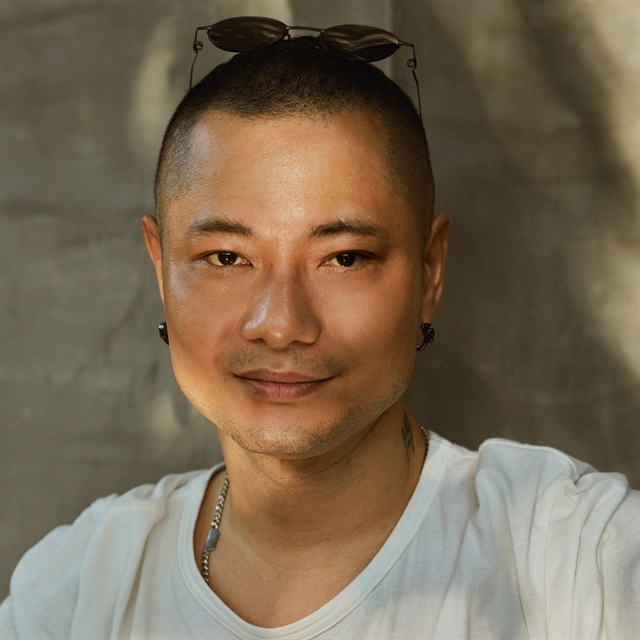
Elle Việt Nam's Creative Director Dzũng Yoko. Photo from the FB page of Dzũng Yoko
Elle Việt Nam Creative Director Dzũng Yoko has launched his latest photo book, Xuân, Hạ, Thu, Đông (Spring, Summer, Autumn, Winter) curating images from his four years of travel to 11 cities and provinces.
He will debut the book at a talk, exhibition and fashion show from May 25 to 27 at Space 13, 13th Floor Diamon Plaza in HCM City.
Digital lifestyle magazine Luxuo.vn interviewed Dzũng about how he came to create the book.
What do locations in Việt Nam correspond to the four seasons in your book title?
Autumn is Hà Nội and summer must be HCM City which is dynamic, youthful and full of energy and Central Huế is winter. When I took the photo series The Ancient Capital, Huế was also in winterr, it was cold and pouring with rain day and night.
As for spring, I choose the western region, with sets of photos in Trà Vinh and Đồng Tháp's Sa Đéc in when the flowers bloom brightly and the winter-spring rice crops ripen. The spring climate in the south is pleasant and there are slanting rays of the sun.
How did you get the idea for this book?
Perhaps I, like many people, felt cramped and suffocated after the Covid-19 pandemic. I wanted to step outside and seek out natural scenery to relieve all the psychological stress.
Before then I was so busy with earning a living I did not have time travelling to explore scenery in the country. So when I set everything aside to go travelling I was surprised to see how beautiful Vietnamese nature is.
Four years is quite a long time?
This is my longest project so far. In 2019, I started taking more outdoor photos, starting in Sa Đéc and came up with the idea of uniting fashion and outdoor photography.
The pandemic broke out, so I couldn't go abroad, so I explored the Vietnamese landscape. I always knew that Việt Nam scenery was beautiful, but now I really saw how glorious, beautiful and tolerant it was.
Each region has its own unique atmosphere that if you don't visit, you will probably never understand. Architecture blends with the landscape, moss, leaning trees and the weather and to create a culture with an indescribable impression.
That's was my initial premise. Most of the fashion photos in my previous artbook book were taken at the studio, with this I wanted to go into the outdoors and the more I travel, the more important cultural elements become. Culture is something inseparable from fashion, nature and life.
But the book also brought you challenges?
I can say that. First of all, travel costs are very expensive. Second, the weather is not always favorable, too much sun makes you tired, too much rain makes you bored.
There is also a set of 'lifetime' photos in the book. To The Last – Goodbye Day was made when HCM City was preparing to enter the first period of social distancing.
I remember the urgency and strangeness at that time, I just pressed the shutter as quickly as I could.
At 5pm, the team finished work, the city locked down at 6pm. And it was a long time before we met again.
Many of the team changed their careers after the pandemic, so there are people I still haven't seen since, at that time, it felt like the last day of my life. I could only cherish the moments at sunset.
Do you have any special memories from making the book?
I especially remembered the moment when I visited Âng Pagoda in Trà Vinh Province. You have to go there to feel and experience religion, architecture, culture and sculpture art.
Plus, without knowing if nature would be kind to me, I was supported when I was shooting in Hà Nội and Ninh Bình, the sky was cloudy for several days in a row, but on the day of the actual shoot, the sunshine was very nice. The weather was fresh and the people were kind and lovely.
What is a typical Vietnamese essential character in your opinion?
I think it is colour. Việt Nam's colour is not dazzling and not too bright like brown, purple, earthy orange and moss green. I think due to the climate, our colours of architecture, fabrics, jewellry, furniture and human skin colour are more gentle, which suit with Vietnamese people's modest character.
What makes you still create physical photobooks in the current digital age?
I still like looking at photos and reading paper magazines. I can quickly search for information online but to hold a photo book in your hands is better, it is an emotion that cannot be generated through a screen.
I bought a photo book by photographer Fan Ho, about Hong Kong in the 50s and 60s. I had seen those photos online, but when I held the book in my hands, I still felt very moved.
It seems like you have to see the picture on paper to understand the story. Although not as popular as they once were, physical books are still a source of inspiration for me and probably for many others as well. And they also leave lasting value. — VNS
OVietnam